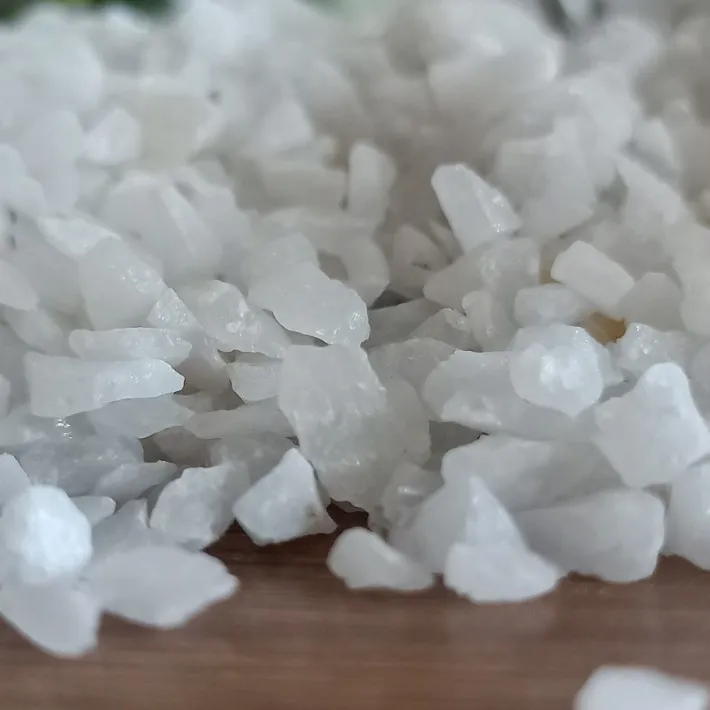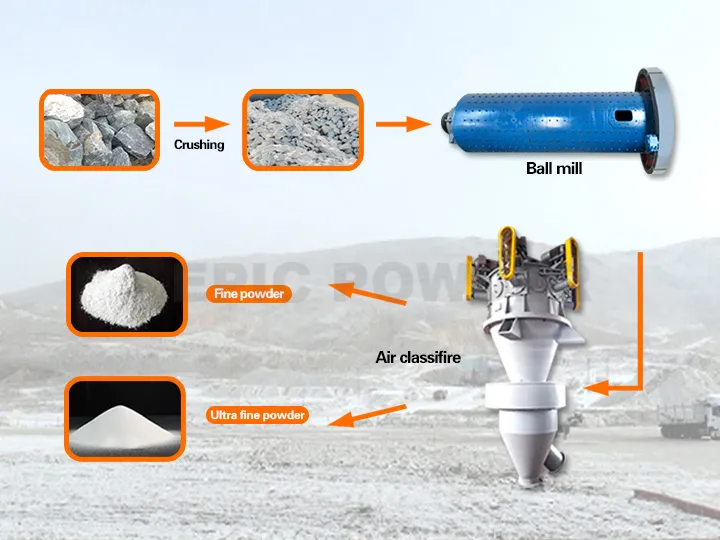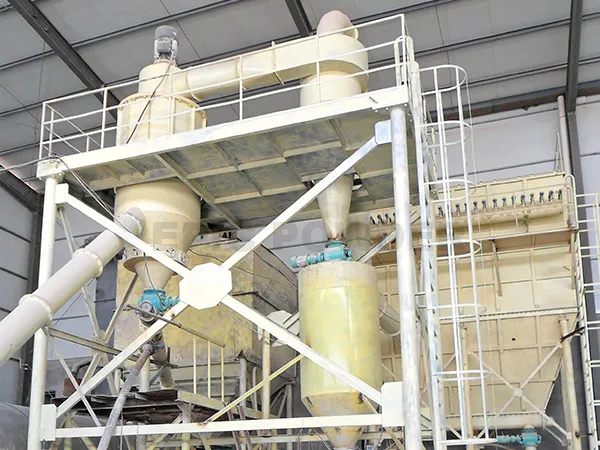Silica powder itself is a polar and hydrophilic substance. It has different interface properties with the polymer matrix and has poor compatibility. It is often difficult to disperse in the base material. Therefore, surface modification of silica powder is usually required. Purposefully change the physical and chemical properties of the surface of silica powder according to the needs of the application, thereby improving its compatibility with organic polymer materials and meeting its dispersion and fluidity requirements in polymer materials.
Factors such as the raw material quality of silica powder, modification process, surface modification method and modifier, modifier dosage, modification process conditions (modification temperature, time, pH and stirring speed) all affect the surface modification effect of silica powder. Among them, surface modification methods and modifiers are the main factors affecting the modification effect.

Silica powder raw material quality
The type, particle size, specific surface area, surface functional groups and other properties of silica powder directly affect its combination with surface modifiers. The modification effects of different types of silica powder are also different. Among them, spherical silica powder has good fluidity, is easy to combine with the modifier during the modification process, and can be better dispersed in the organic polymer system. And the density, hardness, dielectric constant and other properties are significantly better than the angular silica powder.
For example, Huang Weizhuang et al. studied the effects of different types of silica powder on the heat resistance of copper-clad laminates. They used amorphous silica powder, quasi-spherical crystalline silica powder, and spherical fused silica powder as fillers to prepare copper-clad laminates, and measured the thermal resistance of copper-clad laminates. Heat resistance and interface properties. The results show that spherical silica powder is better compatible with epoxy resin, and the prepared copper-clad laminate has better heat resistance.
Generally, the smaller the particle size of silica powder, the larger the specific surface area, the more active sites on the surface, and the amount of modifier used will also increase. In addition, silica powder with different particle sizes also has a certain impact on the performance of downstream products during the application process. For example, when mixing silica powder with resin, the particle size distribution should be strictly controlled and should not be too large or too small. If the particle size is too large, the filling application performance will be poor, while if the particle size is too small, the viscosity of the resin system will increase and the fluidity will deteriorate. .
Surface modification methods and modifiers
At present, the surface modification methods of silica powder are mainly organic modification, inorganic modification and mechanochemical modification, among which the most commonly used modification method is organic modification. When the single modification effect is not good, you can consider combining organic modification with other modification methods for composite modification.
Organic modification
Organic modification is a method that uses functional groups in organic matter to carry out physical adsorption, chemical adsorption and chemical reactions on the surface of silica powder to change the surface properties of silica powder. At present, the most commonly used organic modifiers are silane coupling agents, which mainly include amino, epoxy, vinyl, sulfide and other types. The modification effect is usually good, but the price is expensive. Some researchers use relatively inexpensive modifiers such as aluminate, titanate, and stearic acid to modify silica powder, but the modification effect is often not as good as that of silane coupling agents. Therefore, combining economic benefits and modification effects, using When two or more surface modifiers are used to compositely modify silica powder, the modification effect is often more ideal than using a single modifier.
Inorganic modification
Inorganic modification refers to coating or compounding metals, inorganic oxides, hydroxides, etc. on the surface of silica powder to give the material new functions. For example, Oyama et al. used a precipitation method to cover the SiO2 surface with Al(OH)3, and then wrapped the modified SiO2 with polydivinylbenzene to meet certain special application requirements.
Mechanochemical modification
Mechanochemical modification refers to first using ultra-fine grinding and other strong mechanical forces to activate the surface of powder particles to increase active points or active groups on the surface of silica powder, and then combining modifiers to achieve composite modification of silica powder.
Modifier dosage
The amount of modifier is usually related to the number of active points (such as Si-OH) on the surface of silica powder and the monomolecular layer and bimolecular thickness of the modifier covering the surface. When the amount of modifier is too small, the degree of activation of the surface of the modified silica powder will not be high; when the amount of modifier is too large, it will not only increase the cost of modification, but also form a multi-layer physical layer on the surface of the modified silica powder. Adsorption causes the interface between silica powder and organic polymer to form a weak layer, resulting in the inability to function as a single molecule bridge.
Modification process and condition optimization
Commonly used modification processes for silica powder mainly include dry modification, wet modification, and composite modification.
(1) Dry modification is a modification in which silica powder is dispersed in the modification equipment in a relatively dry state and combined with a certain amount of surface modifier at a certain temperature. Dry modification process is simple and has low production cost. It is currently the main method of surface modification of domestic silica powder and is suitable for micron-level silica powder.
(2) Wet modification refers to wetting the surface of silicon powder under liquid phase conditions to reduce the binding energy of the surface, and then adding a certain amount of surface modifiers and additives, stirring and dispersing at a certain temperature, to achieve silicon Surface modification of micropowders. The wet modification process can make the silica powder and the modifier more easily dispersed and more fully combined, making the modification more uniform. However, subsequent dehydration operations are required, the process is complex and energy consumption is high, and it is more suitable for ultrafine particles with a particle size less than 5 μm. Silica powder modification. In addition, the water solubility of the modifier should also be considered during the wet modification process, because only modifiers with better water solubility can better disperse and interact with the Si-OH groups on the surface of the silica powder.
(3) Composite modification refers to the combination of dry and wet modification processes to further improve the activation degree of silica powder. For example, Cao Jiakai et al. carried out modification in two steps through dry and wet processes. That is, first through dry modification, γ-(2,3-epoxypropoxy)propyltrimethylsilane was used to conduct preliminary modification of silica powder. Modification, and then through wet modification, using N-phenyl-aminotrimethoxysilane for modification to obtain active silica micropowder. The results show that the silica powder produced by the composite modification process has high activity, good hydrophobicity, small number of surface hydroxyl groups, and can be better dispersed in the resin system.
In addition, in order to achieve good modification effect of silica powder, the temperature, pH, time, stirring speed and other process conditions during the modification process should be controlled.
Modification temperature is an important condition for the condensation, dehydration and formation of strong covalent bonds between the modifier and silica powder. The modification temperature should not be too high or too low. Too high a temperature will cause the modifier to decompose or volatilize, and too low a temperature will cause the modifier to decompose or volatilize. This will reduce the reaction rate between the modifier and the silica powder, affecting the modification effect.
For modifiers dissolved through solvents, pH will affect the hydrolysis effect. A longer modification time makes the interaction between the modifier and the silica powder more complete and firm; a suitable stirring speed can make the modifier and the silica powder contact more fully and improve the dispersion of the modifier in the silica powder.

